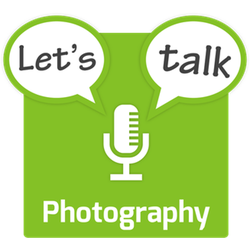Panel
- Bart Busschots (host) – @bbusschots – Flickr
This solo show is a bit of a potpourri — Bart starts by demystifying the jargon around the recent advances in smartphone zoom lenses, then gives a quick review of the photo book ‘Evelyn Hofer Dublin’ which he pre-ordered after recording episode 102 ‘Ward Rosin on Evelyn Hofer’.
While this podcast is free for you to enjoy, it’s not free for Bart to create. Please consider supporting the show by becoming a patron on Patreon.
Reminder – you can submit questions for future Q & A shows at http://lets-talk.ie/photoq
Periscopes & Tetraprisms
The very thing that makes camera phones such great cameras also makes them so difficult to engineer — as the cliché goes, ‘the best camera is the one you have with you’. We want a camera that’s small and light enough to always have with us, but we also want it to shoot high resolution sharp images in low light with natural bokeh and a broad zoom range. All of those things are easy to do big and heavy, and really difficult to do small and light, which of course we insist our phones remain.
The progress engineers in companies like Apple, Samsung, and Google have made at squaring all these circles in recent years is amazing — better sensors, amazing lenses, multiple cameras, computational photography, and machine learning have taken us a very long way indeed! But, they’ve yet to give us high quality optical zoom with effective focal lengths about about 75mm (3x zoom like on the iPhone 14 Pro).
The reason this problem has proved difficult to crack is that to zoom in more you need a longer focal length, which literally means you need a longer light path between the front of the lens and the sensor. Without clever trickery, that means you need thicker phones. We’ve gotten to the current norm by adding ever bigger camera bumps, but there’s only so far you can go with that approach, and 3x zoom seems to be the limit.
Since it’s the distance the light rays travel that matters, not the physical distance between the elements, you can ‘cheat’ by somehow folding the light path. This idea of a bent light path is colloquially referred to as ‘periscoping’, in honour of the sights in subs the let captains see along the surface of the water from underneath it. In that case the light path gets bent twice — first by 90 degrees to send light rays that are parallel to the sea surface vertically down, then by another 90 degrees to make them horizontal again at the eyepiece.
The simplest way to ‘periscope’ a phone camera is to do half of that. You put the lens on the surface of the camera bump as before, then use a traditional 3-sided prism to bend the light path 90 degrees to send it either across the top of the phone if you have a camera strip, or down the length of the phone of the entire body is thick enough to house a sensor sitting perpendicular to the screen.
That’s an easy light path to imagine, but it means having a cylindrical void running through all the other components which are all in the same plane, sandwiched between the screen and the back of the phone. You get a long light path, but now one of your sensors is oriented at perpendicular to the others, and indeed, to just about every other part in the entire phone, which complicates the design.
There have been Android phones with this type of periscopes arrangement for years now, and everyone assumed Apple would do the same with one or both of the iPhone 15 pros this year. And they sorta did, but they did it in an unexpectedly clever way.
If your definition of ‘periscoping lens’ is any folded light path, then the iPhone 15 Pro Max has a periscoping lens, but if your definition is ‘a light path bent by 90 degrees’ then it doesn’t. What Apple did was fold the light path in such a way that they can keep the sensor parallel with the front of the lens. Instead of bending it once, they zig-zag the light down a little, and off to one side, and they manage to create the complex light path by adding just one new optical element, a parallelogram-shaped prism, i.e. a ‘tetraprism’. Why ‘tetra’, because it’s greek for four — as you know, a monopod has one leg, a biped like us humans has two feet, a tripod has three legs, and a tetrapod like a cat walks on ‘all fours’!
Apple have not released detailed schematics, but they did quickly flash up a marked up image showing the lens, the tetraprism, and the sensor, and you can see how the sensor is parallel to the lens, and the light bounces four times within the single prism to fold the light path very effectively.
This very clever bit of optics lets Apple keep the the phones design simple, gives an impressively long light path in a small physical distance, and should have minimal negative effects on image quality because we know how to make very high quality optically clear prisms.
Evelyn Hofer Dublin
German photographer Evelyn Hofer spent a few months living and photographing in Dublin in 1967. She fell in love with the city, and the photographs she shot are a time capsule of both the place and the people. When Ward Rosin evangelised her work on Episode 102 I was smitten by her work, and when Ward told me there was a new book on the way showcasing her work in Dublin I immediately pre-ordered it. That book’s ship date slipped by over a year, but it finally made it to press this summer, and I’ve had my copy for a few weeks now.
The book is published by Steidl, and has a hand-crafted feel that suggests this was a small print run made with great care. Structurally this is very different to the last photo book I bought (on O. Winston Link). There is no mixing of words and images — almost the entire book is full-page photos printed on just one side of the thick glossy paper with generous white borders and small unobtrusive and very short titles underneath the photos. The photos stand alone, and they speak for themselves. The quality is superb, they photos just suck you in because there are absolutely no distractions. I’ve just loved slowly flipping through the pages over these last few weeks, lingering on different photos each time, and always noticing new details and nuances.
The book is not entirely free of words — it ends with a short essay by the German-Irish author Hugo Hamilton. I really enjoyed the essay, but the presentation left me a little perplexed. Hamilton’s prose set up the photos so well, why are they at the end? Surely The essay belongs at the start of the book to set the scene? Also, the essay references quite a few of the more eye-catching photos in the book, but it doesn’t include anything to help you find the relevant photo, no page numbers, no footnotes, nothing. You really need to have absorbed all the photos before you can get the most our of the essay. Maybe that’s why it’s at the end?
Anyway, if you take the time to immerse yourself in this book you’ll be rewarded with an amazing snapshot of the people and city scape of Dublin in the late 1960s.
If I’ve whet your appetite, here’s the direct link to the Book’s page on the publisher’s site — [steidl.de/…](https://steidl.de/Books/Dublin-0717284955.html).


I finally listened to (the first half of) this episode. I felt sure you would mention that prisms are not new in photography. They are very common in SLR and DSLR cameras as a means of both reflecting and ‘erecting’ the image you see in the viewfinder. A different use, but the same requirement for optically excellent prisms.